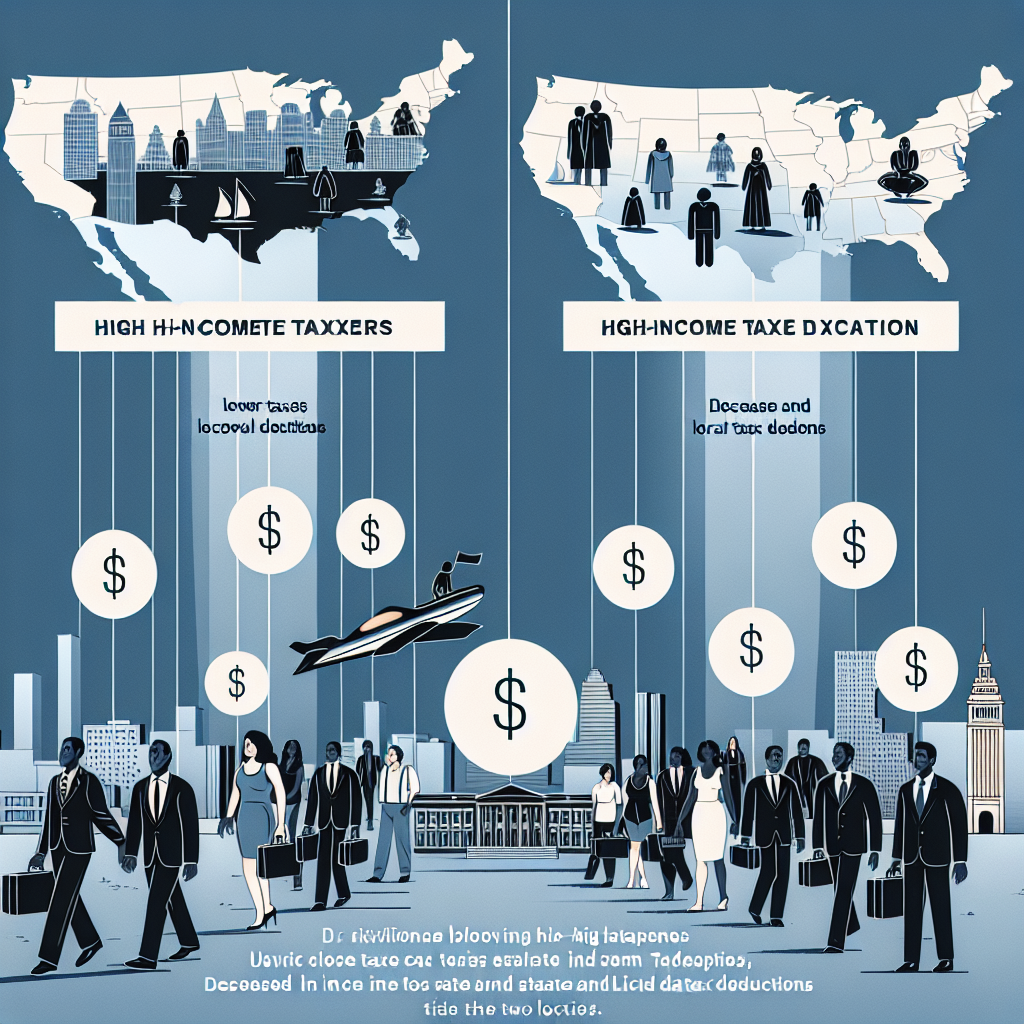According to a recent report released by Goldman Sachs, even if the U.S. Congress considers raising the cap on state and local tax (SALT) deductions, this potential tax reduction measure is still not enough to stop high-income taxpayers from continuing to move to low-tax states such as Florida and Texas.
Led by Goldman Sachs’ chief economist Jan Hatzius, the team pointed out in the report that over the past 20 years, there has been a significant shift in interstate migration patterns in the United States, with a movement from the Northeast and the West Coast to the South and Southwest regions. In recent years, this migration trend has become more pronounced due to the rise of remote work under the COVID-19 pandemic and the setting of a $10,000 limit on SALT deductions in the 2017 tax reform law.
The current $10,000 SALT deduction cap is set to expire at the end of 2025, and Republican lawmakers are pushing to raise the limit to $40,000, hoping to garner support from Republican lawmakers in high-tax states like New York when promoting the new bill in the House of Representatives.
However, Goldman’s analysis suggests that this measure has limited effectiveness, and the trend of high-income individuals leaving high-tax states and moving to low-tax states is likely to continue.
The report from Goldman Sachs indicates that the number of New York tax filers with annual incomes exceeding $1 million has grown by 40% since 2016, but the corresponding figure for Florida has surged by 150%, with a nationwide average increase of 90%.
Apart from New York, California and Massachusetts have also seen a significant decrease in the number of high-income filers; in contrast, Texas and Arizona, following Florida, have become hotspots for the influx of high-income residents.
The report also points out that when high-income individuals move to low-tax states, they often relocate their companies or businesses as well, exacerbating the tax base erosion in their original states. Goldman Sachs estimates that tax revenues in high-tax states like New York and California have declined by about 3% since the 2017 tax reform, while states like Oregon, Minnesota, and Illinois have seen a 1% to 2% decrease in tax revenues.
Citing reports from the New York Post and Fox Business News, critics of the policy controversy surrounding the SALT deduction cap argue that high-tax states should consider lowering tax rates to enhance competitiveness, and should not incentivize local tax increases through the federal tax system. Supporters, on the other hand, believe that the 2017 tax law has accelerated the outflow of population and businesses from high-tax states, further burdening the remaining residents with tax obligations.
Democratic U.S. Congressman Tom Suozzi of New York State stated that the SALT deduction cap has a detrimental impact on residents of high-tax states and fuels population outflow. Suozzi also warned that if this trend continues, high-tax states are likely to experience further loss of representation in Congress during the 2030 census.

